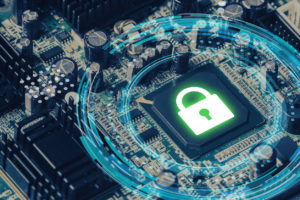Data loss is a serious problem that can have a devastating effect on businesses. In fact, data recovery statistics show that data loss can be extremely costly and time-consuming. Here are some of the most recent data recovery statistics that explore the reality of data loss.
- Gartner found that 72 percent of organizations are not well-positioned with regard to disaster recovery capabilities, with 59 percent of respondents expecting budgetary increases for disaster recovery this year.
- Companies without an effective disaster recovery plan stand to lose millions. According to Gartner, the average cost of IT downtime is $5,600 per minute (adding up to more than $300,000 per hour). For large organizations, that number tops half a million dollars.
- Ransomware is a huge concern, and many people don’t realize that their disaster recovery plan may not work when they need it most. This adds significant risk to your ability to recover from ransomware if you are not prepared for the attack. In a recent study, IDC reported that 37 percent of companies worldwide were hit by ransomware in the previous 12 months. The average ransom paid was $250K, though some hackers asked for as much as 1M dollars.
- Ninety-six percent of companies with a trusted backup and disaster recovery plan were able to survive ransomware attacks.
- A disaster can strike at any time and without warning, so it is imperative that you have a plan in place to help your company recover quickly from these events. However, FEMA found that 20 percent of companies have no disaster recovery planning in place.
- A report by the Ponemon Institute reveals that 93 percent of companies that lost their data center for 10 days or more due to a disaster, filed for bankruptcy within one year of the disaster. Fifty percent of businesses that found themselves without data management for this same time period filed for bankruptcy immediately.
- Cloud backup can be an incredibly useful tool when it comes to data recovery. According to Statistica, as of 2019, 94 percent of the small-sized organizations who were surveyed worldwide claimed that they had used the cloud for data storage or backup.
- A study by IBM on data recovery planning, including the cost and frequency of data breaches, showed a decrease in costs by more than 30 percent in organizations that embrace proactive recovery programs. The research shows that organizations who invest in automated disaster recovery have an operational edge over those without. They also maintain their business reputation and financial success, which is crucial for growth.
- Disaster recovery planning is one of the most important aspects of protecting your business. But how often do you actually test your disaster recovery plan? A report by Statistica reveals that only 35 percent of respondents stated that their company tested its disaster recovery plan on a quarterly basis as of 2019.
- A report by UniTrends found that cloud-based Disaster Recovery-as-a-Software (DRaaS) will be used by 59 percent of businesses by 2021. Currently, 36 percent of businesses use this, and a further 23 percent plan to add the technology within the next year.
The above statistics are a wake-up call for many businesses. Having a well-designed and effectively maintained disaster recovery plan in place will substantially increase your ability to recover lost data, returning you back into normal operations as quickly with minimal business disruption.
SystemsNet is the trusted choice for complete network solutions. With almost 20 years in business, they’ve built a reputation as an industry leader and provide reliable services that meet your needs with tailored plans for any budget. Contact us for more information on our complete line of disaster recovery solutions for your business.



